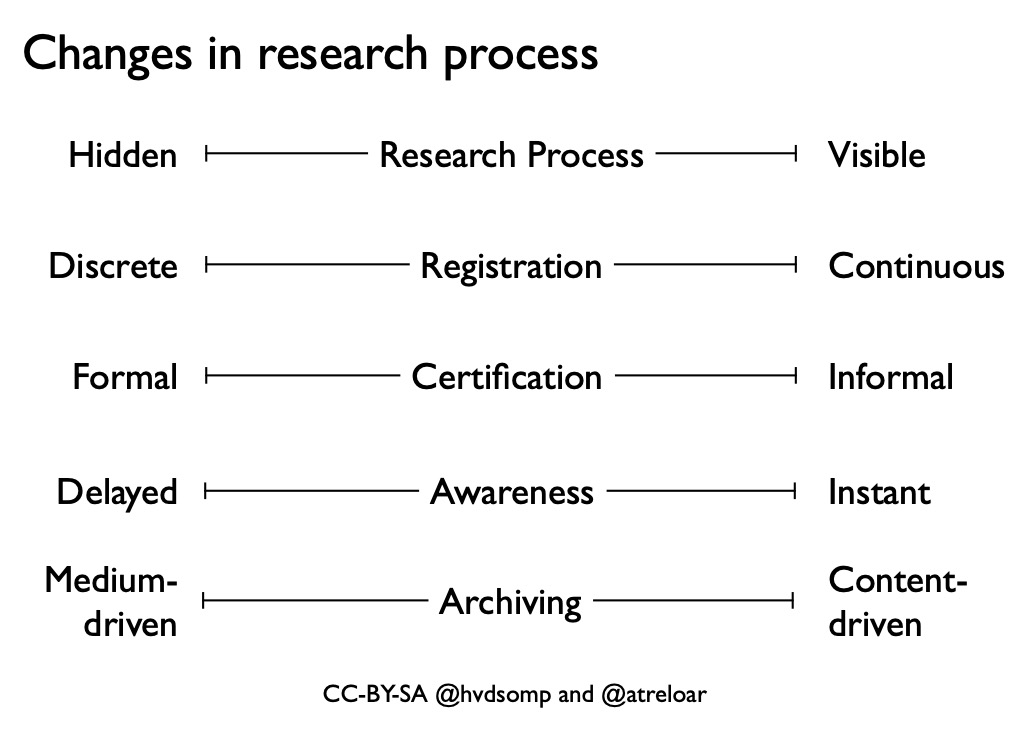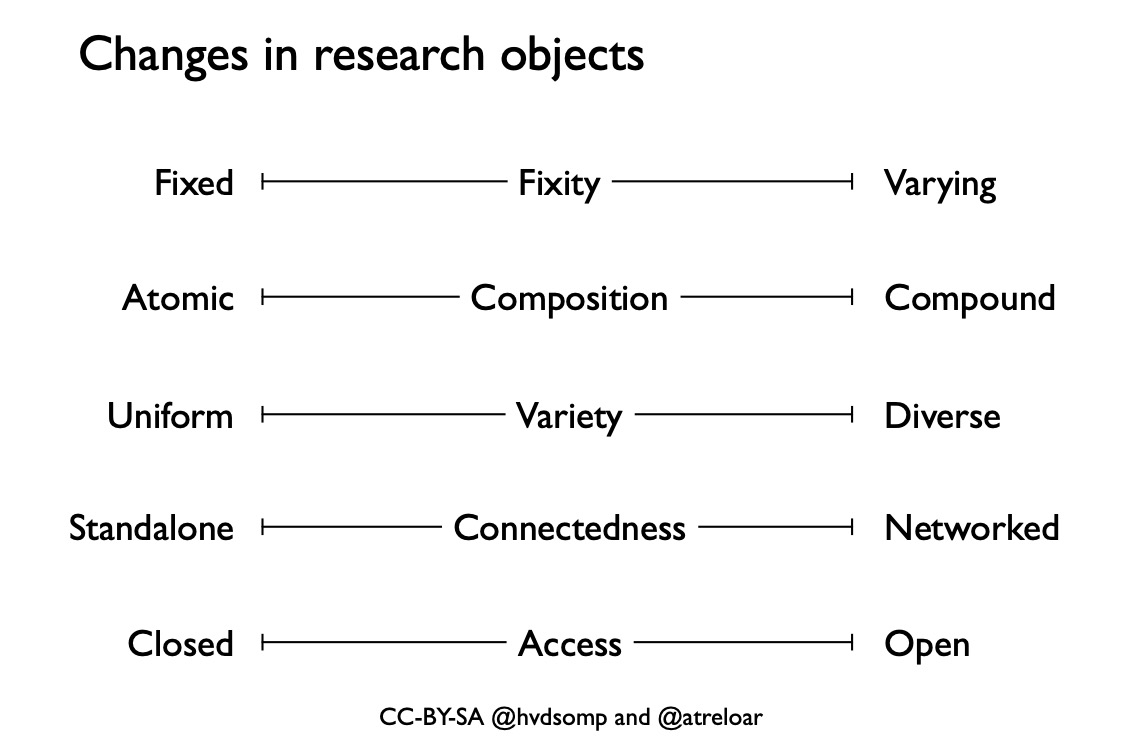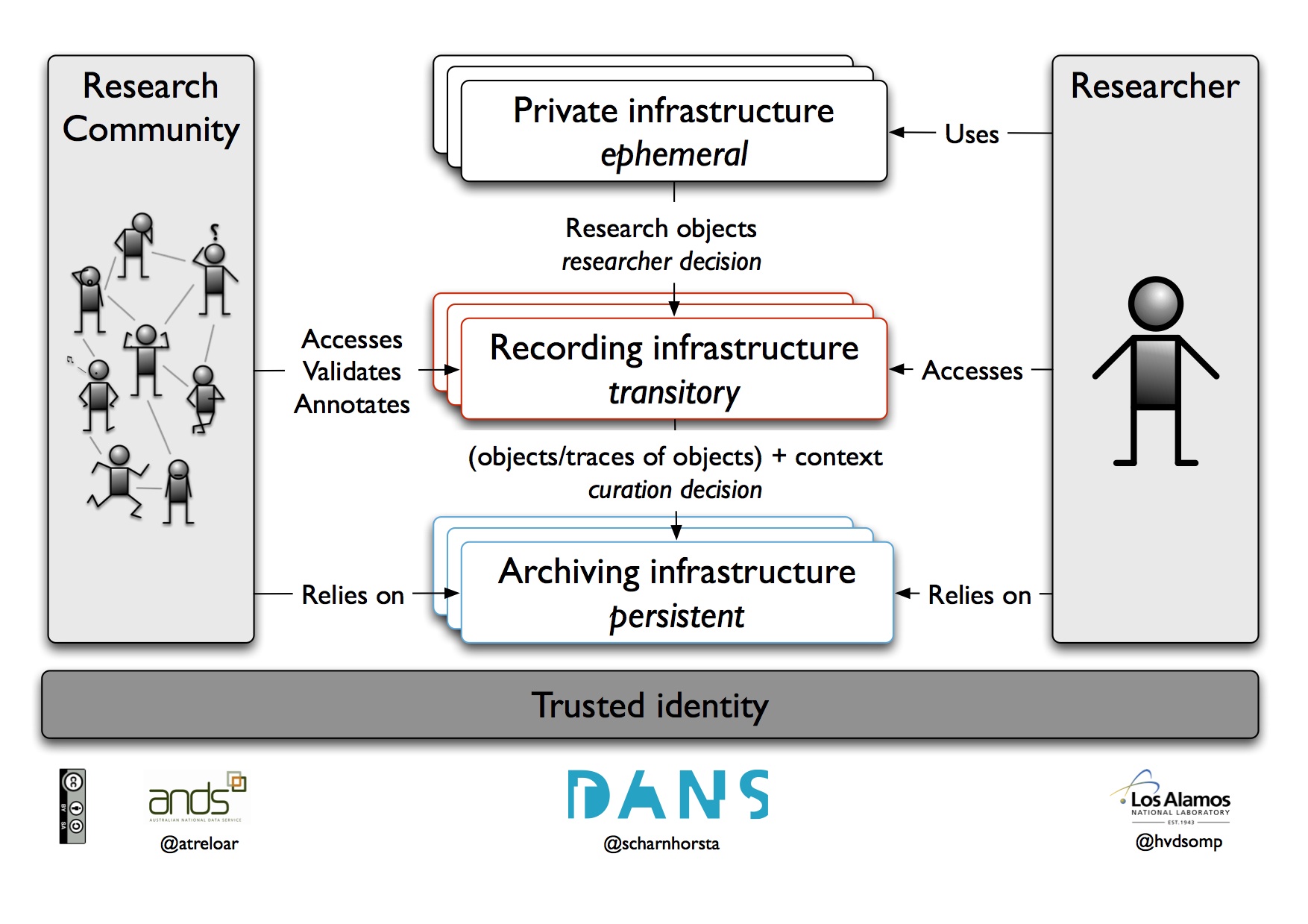Archiving the Scholarly Web
Context
In 2013 I was fortunate to receive an invitation from Peter Doorn, then Director of DANS, to spend some time in the Netherlands as a Visiting (now Honorary) Fellow. I ended up doing this in two 6 week blocks: September/October 2013 and December/January 2014. For the second of those blocks, I was joined by Herbert van de Sompel. During an intense period of collaboration we explored the interaction between his thoughts on archiving and my thoughts on the research process. The result was a workshop run at DANS and a paper (Van de Sompel and Treloar 2014 - citation below) at iPres 2014.
Slides
The work I did with Herbert began with a series of observations that pertained both to scholarly communication as such and to the objects that are being communicated; they were summarized in the first two figures below. In both figures, the left hand side reflects the status of a process or property in the system of journals, whereas the right hand side reflects its status in a future, emerging system, which this paper refers to as the web of objects.
The first figure depicts the transition of the research process itself from being hidden in the system of journals towards being visible in the web of objects. Indeed, the increased use of commodity networked technologies such as on demand cloud computing infrastructure and collaboration/sharing platforms for a variety of objects including software and workflows, make sharing objects that are created during that process not only possible but also attractive. MyExperiment, GitHub, Dropbox, networked lab notebooks, scientific wikis and blogs stand out as obvious examples of this.

The second figure concentrates on the changing nature of the objects that are communicated in the scholarly communication system, confirming the evolution from fixed to varying, from atomic to compound, from uniform to diverse, and from standalone to inter- related or networked.

The third figure provides a high-level view of a nascent future scholarly infrastructure. Interestingly, the centre of this figure can be viewed as a 90 degree rotation of the data curation continuum.

References
Van de Sompel, H and Treloar, A. (2014), "A Perspective on Archiving the Scholarly Web", Proceedings of iPres 2014 (all papers), or Author's copy of this paper only